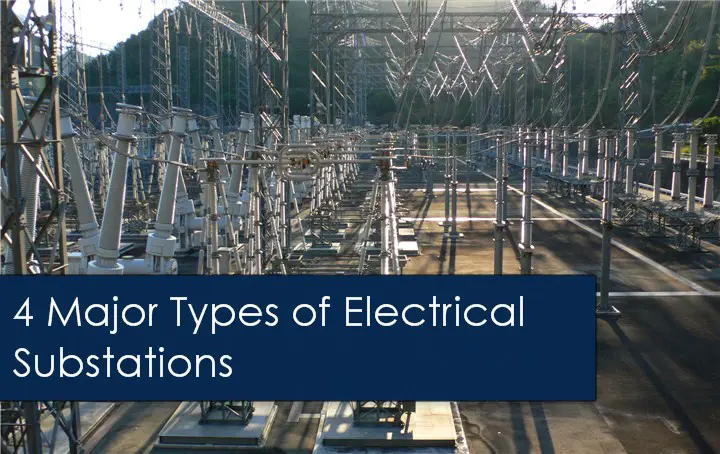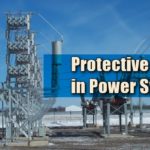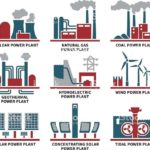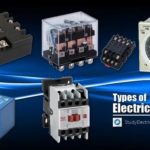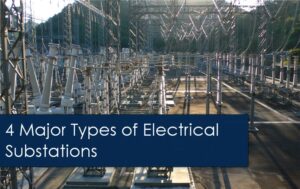
The assembly of the apparatus used to change some characteristic (e.g. voltage, a.c. to d.c., frequency, p.f etc.) of electric supply is called a sub-station. The four major types of substations are explained in this article.
Sub-stations are an important part of the power system. The continuity of supply depends to a considerable extent upon the successful operation of sub-stations.
There are four major types of substations.
- switchyard at a generating station
- customer substation
- system station
- distribution station
Generating Station Switchyards
The first type is the switchyard at a generating station. These facilities connect the generators to the utility grid and also provide off-site power to the plant.
- Generator switchyards tend to be large installations. They are typically engineered and constructed by the power plant designers. They are subjected to planning, finance, and construction efforts different from those of routine substation projects.
- Because of their special nature, the creation of power plant switchyards will not be discussed here. But the expansion and modifications of these facilities generally follow the same processes as system stations.
Customer Substations
The second type of substation, typically known as the customer substation, functions as the main source of electric power supply for one particular business customer.
- The technical requirements and the business case for this type of facility depend highly on the customer’s requirements, more so than on utility needs.
System Stations
The third type of substation involves the transfer of bulk power across the network and is referred to as a system station. Some of these stations provide only switching facilities (no power transformers) whereas others perform voltage conversion as well.
- These large stations typically serve as the endpoints for transmission lines originating from generating switchyards and provide the electrical power for circuits that feed transformer stations.
- They are integral to the long-term reliability and integrity of the electric system and enable large blocks of energy to be moved from the generators to the load centers.
- These system stations are strategic facilities and usually very expensive to construct and maintain.
Distribution Substation
The fourth type of substation is the distribution station. These are the most common facilities in power electric systems and provide the distribution circuits that directly supply most electric customers.
- They are typically located close to the load centers, meaning that they are usually located in or near the neighborhoods that they supply, and are the stations most likely to be encountered by the customers.
- Depending on the type of equipment used, the substations could be
- Outdoor type with air-insulated equipment
- Indoor type with air-insulated equipment
- Outdoor type with gas-insulated equipment
- Indoor type with gas-insulated equipment
- Mixed technology substations
- Mobile substations
